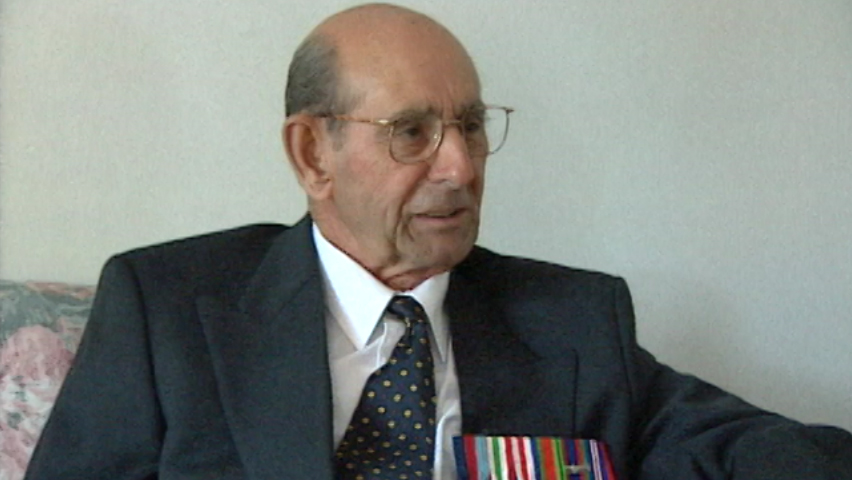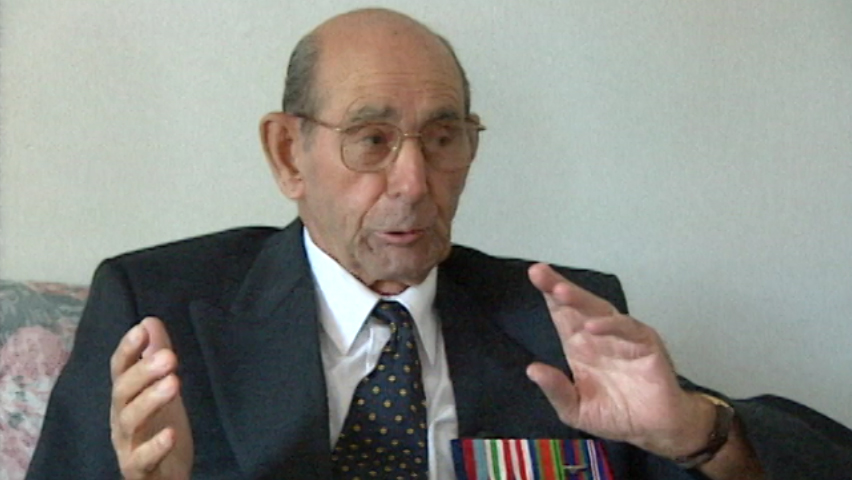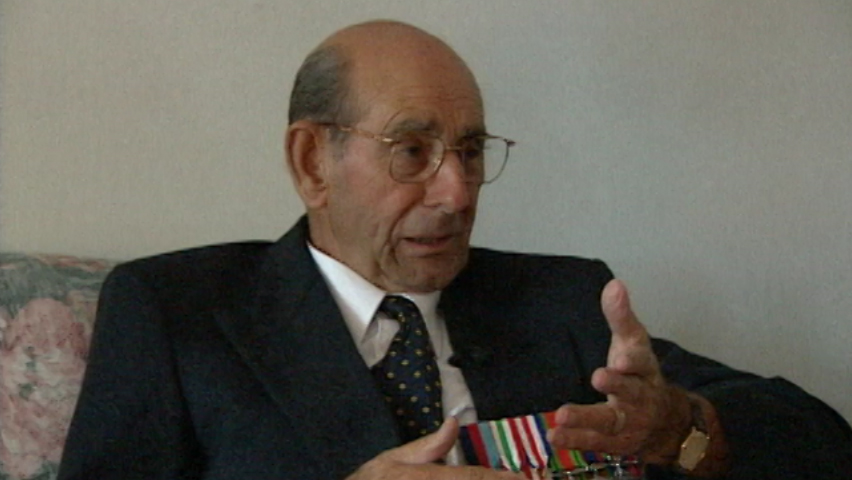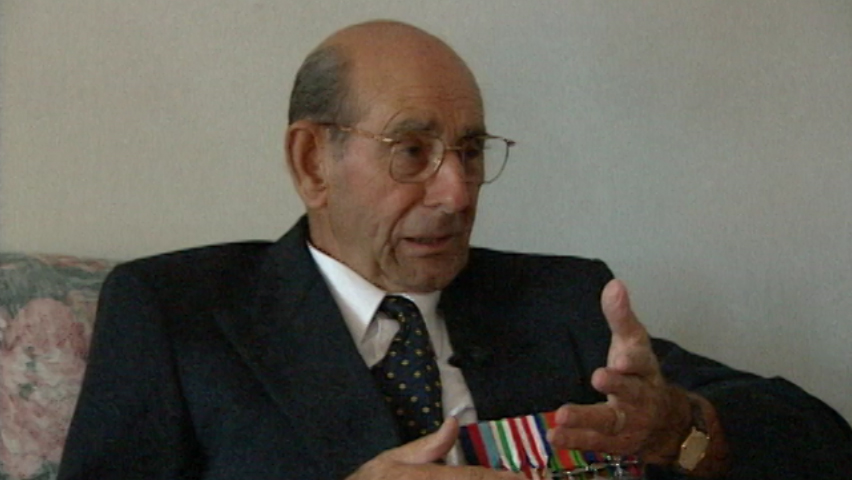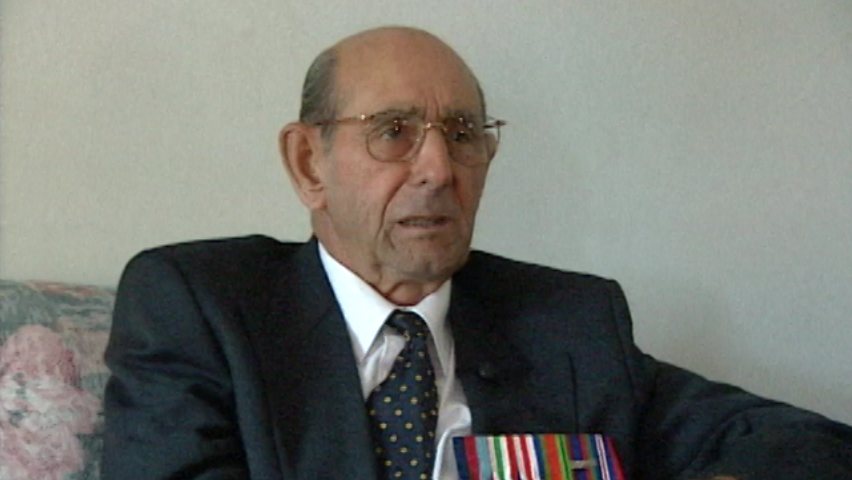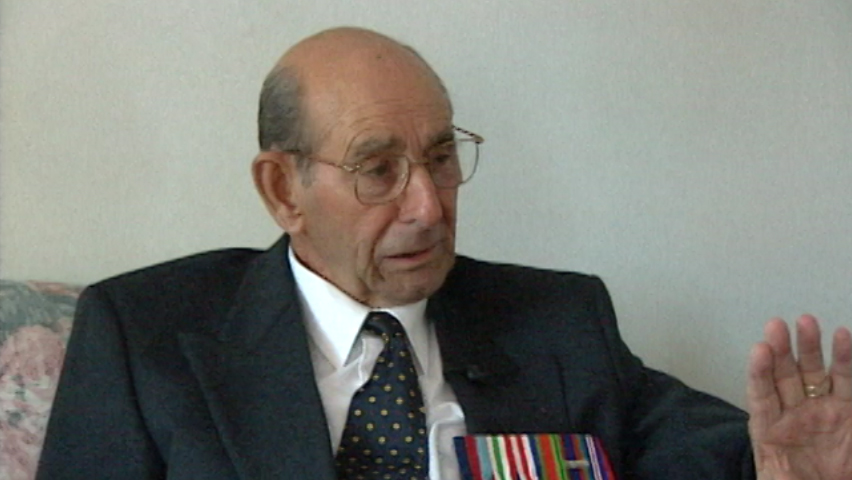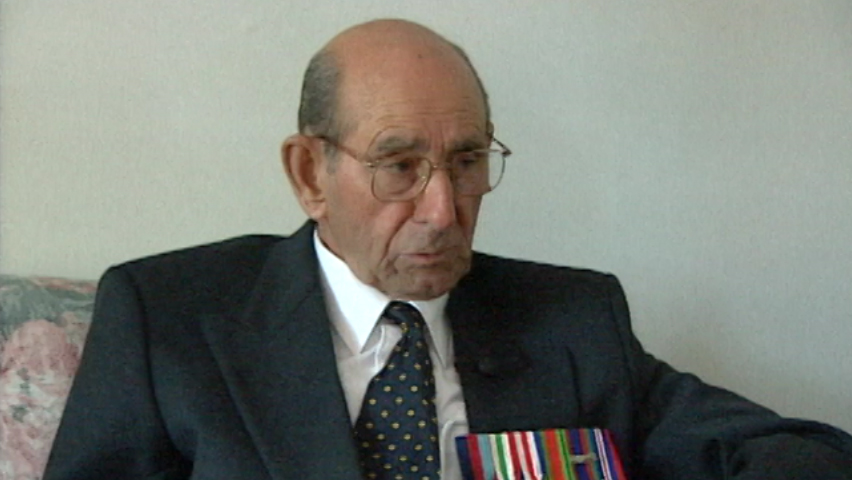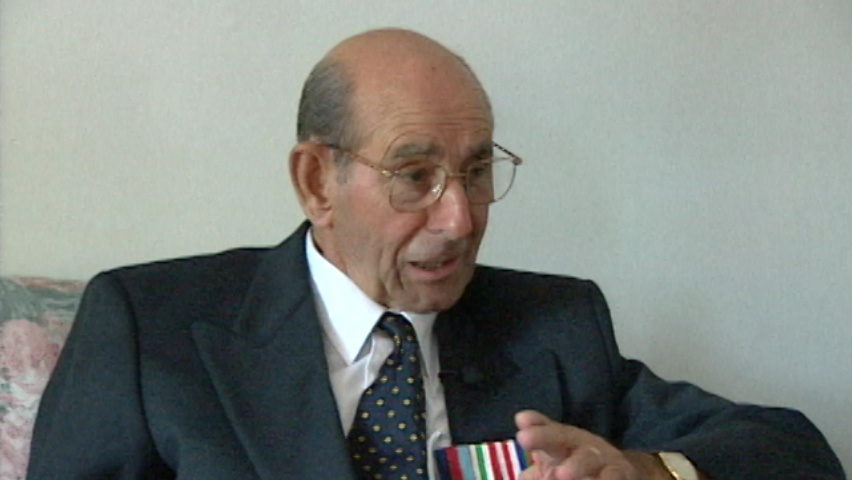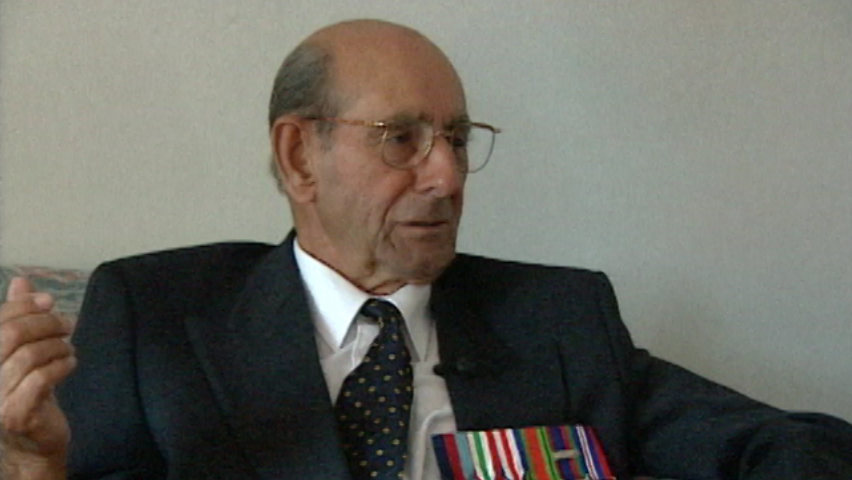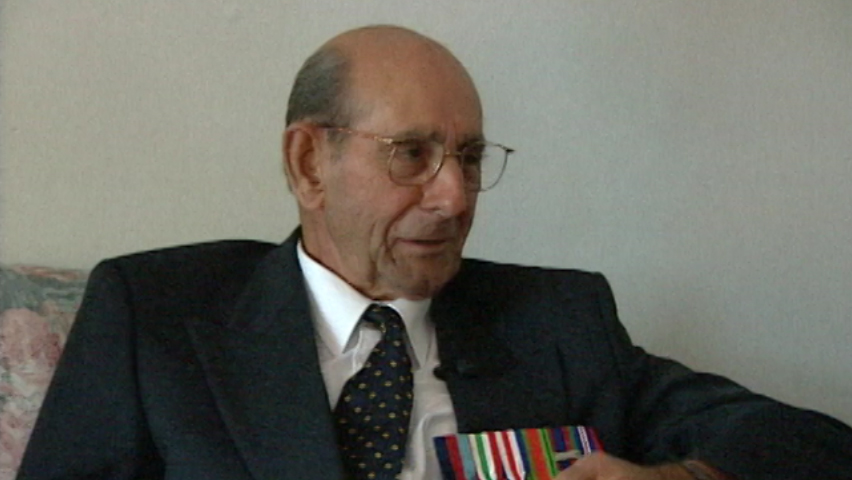The battle of Ortona, I was the RAP truck driver then,
Regimental Aid Post, with all the medicine in
it thing for the whole regiment, you know.
And the regiment was at the front line and
I was with the B Echelon they called that,
in the back you know.
Then they had a big fight there at Ortona,
and I remember there was a lot of
wounded so they needed the material.
The doctor needed the material that
was in the truck that I was,
so they sent me to the front.
So they gave me a, traced me
a route how to take,
where was the regiment and all this.
I tried to follow it of course and
you go down a ravine, it's a,
it was a dry bed of a river, see.
I didn't see the sign 67.
They put the sign 67, see that was
our regimental number. I didn't see the sign,
I went past and the first thing I knew I was
where the engineers testing for mines.
I said, “Boy, I'm going too far.”
Then there was a small garage there with jeeps
in the front there and signalers, you know.
I better stop here. I stopped and I got out and
I went to ask them, I said, “You know where
the Royal 22nd Regiment is?” “Yes,” he says,
“it's back there about half a mile.”
“Oh,” I says, “I went too far.”
And no sooner as I speak to them,
the Germans open up with their Moaning Minnies.
We called that the Moaning Minnies.
That's mortar fire but they fired six at a time you
know and it's moaning, [imitates noise].
And they were firing at me, because
they saw me coming with a big truck there.
They didn't care about the red cross
that was on the truck. The two guys I was
speaking to they were killed right there and
that's where I got a piece of
shrapnel on the ankle.
I took a dive beside the truck and
I stayed there and a piece of shrapnel
hit me there, that's all.
Then I said, I better not stay here.
I went in the back.
There was an officer there.
Then the officer said to me,
he said, “Is that your truck there?”
I said, “Yeah.” “Well,” he says,
“get the hell out of here,”
he said, “you're drawing the fire!”
I never turned that truck so fast like
that in my life, but I turned but
they followed me with their...
I went into the small town there.
No sooner I got off the truck I got,
I dove into a place where they had all
the signalers and all this.
The pieces of shrapnel was hitting the walls,
you could hear it.
I was laying on the floor and I wasn't touched.
But anyway, then they came to tell me that
the doctor was just around the corner,
just down there, to take the truck there so I did.
They followed me again.



